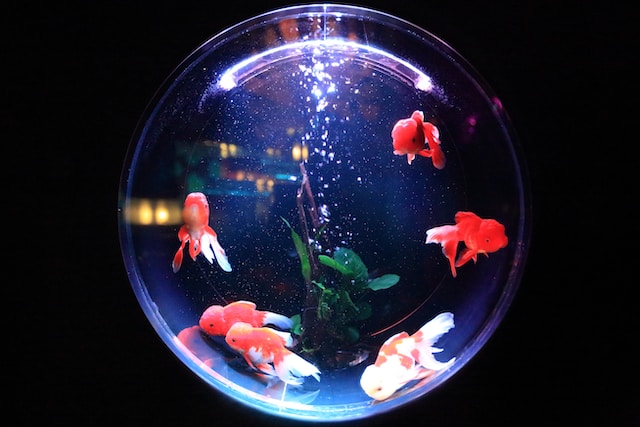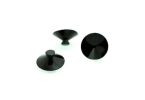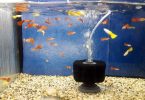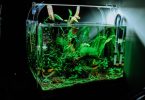Table of Contents
Fish tanks are a popular way to keep aquatic animals in the home or office. However, not all fish tanks are created equal. Some can be poorly designed or maintained, leading to unhealthy and unhappy fish. In this article, we will explore some of the worst fish tanks and the problems they pose for their inhabitants.
One of the biggest issues with fish tanks is their size. Many people purchase tanks that are too small for the fish they want to keep.
This can lead to overcrowding, poor water quality, and stress for the fish. In addition, small tanks are more difficult to maintain and require frequent water changes to keep the water clean and healthy.
Another problem with fish tanks is poor filtration. A good filtration system is essential for maintaining a healthy environment for fish.
Without proper filtration, waste and debris can accumulate in the tank, leading to high levels of ammonia and nitrites. This can be toxic to fish and cause a range of health problems, including fin rot, bacterial infections, and even death.
In the next section, we will examine some of the worst fish tanks and the problems they pose for their inhabitants.
Common Mistakes
When it comes to fish tanks, there are many common mistakes that people make. These mistakes can lead to poor fish health, water quality problems, and other issues.
In this section, we will discuss some of the most common mistakes that people make when setting up and maintaining a fish tank.
Overstocking the Tank
One of the most common mistakes that people make is overstocking their fish tank. Overstocking can lead to poor water quality, stress on the fish, and other problems. It is important to choose fish that are appropriate for the size of your tank and to avoid overcrowding.
Neglecting Water Quality
Another common mistake is neglecting water quality. Poor water quality can lead to a variety of problems, including fish illness and death.
It is important to test the water regularly and to perform water changes as needed. In addition, it is important to avoid overfeeding your fish, as this can lead to excess waste in the tank.
Choosing the Wrong Tank Size
Choosing the wrong tank size is another common mistake that people make. It is important to choose a tank that is appropriate for the size and number of fish that you plan to keep.
A tank that is too small can lead to overcrowding and poor water quality, while a tank that is too large can be difficult to maintain.
In summary, there are several common mistakes that people make when setting up and maintaining a fish tank. These mistakes can lead to poor fish health, water quality problems, and other issues.
By avoiding these mistakes and following proper fish tank maintenance practices, you can ensure that your fish thrive in a healthy and happy environment.
Inadequate Filtration
Inadequate filtration is one of the most common problems with fish tanks. It can lead to a variety of issues, including poor water quality, disease, and even death of fish. In this section, we will discuss the types of filtration and problems that can arise from inadequate filtration.
Types of Filtration
There are three types of filtration: mechanical, biological, and chemical. Mechanical filtration removes debris and waste particles from the water.
Biological filtration converts harmful waste products into less harmful ones. Chemical filtration removes impurities from the water.
Inadequate mechanical filtration can result in a buildup of debris and waste particles in the tank, leading to poor water quality and disease.
Inadequate biological filtration can result in a buildup of harmful waste products, such as ammonia and nitrite, which can be lethal to fish.
Inadequate chemical filtration can result in impurities in the water, such as chlorine and heavy metals, which can also be harmful to fish.
Problems with Inadequate Filtration
Inadequate filtration can lead to a variety of problems in fish tanks. Some of the most common problems include:
- Poor water quality: Inadequate filtration can result in a buildup of waste products in the water, leading to poor water quality. Poor water quality can cause stress, disease, and death in fish.
- Disease: Poor water quality can also lead to an increased risk of disease in fish. Bacteria and other pathogens thrive in dirty water, and fish that are stressed due to poor water quality are more susceptible to disease.
- Algae growth: Inadequate filtration can also lead to an overgrowth of algae in the tank. Algae can be unsightly and can also compete with fish for oxygen and other resources.
- Smelly water: Poor water quality can also result in smelly water, which can be unpleasant for fish owners.
In conclusion, inadequate filtration is a common problem in fish tanks that can lead to a variety of issues. It is important to choose the right type of filtration for your tank and to maintain it properly to ensure the health and well-being of your fish.
Poor Tank Design
Poor tank design can lead to a variety of problems that can be harmful to fish and their overall well-being. Inappropriate decor, inadequate lighting, and improper placement are some of the most common issues associated with poorly designed tanks.
Inappropriate Decor
Inappropriate decor can be harmful to fish in several ways. Sharp or rough objects can cause physical harm, while objects that leach chemicals into the water can cause health problems.
Decorations that are too large can also take up too much space in the tank, limiting the swimming area for the fish.
To avoid these problems, it is important to choose decor that is specifically designed for aquariums. Avoid using objects from outside the tank, as they may contain harmful chemicals or sharp edges.
It is also important to choose decor that is appropriately sized for the tank and does not take up too much space.
Inadequate Lighting
Inadequate lighting can be harmful to fish in several ways. Lack of light can lead to poor growth and development, while too much light can cause algae growth and other problems.
It is important to choose lighting that is appropriate for the type of fish in the tank and the plants or other living organisms in the tank.
To avoid these problems, it is important to research the lighting needs of the specific fish and plants in the tank. It is also important to choose lighting that is appropriate for the size of the tank and the depth of the water.
Improper Placement
Improper placement of the tank can be harmful to fish in several ways. Placing the tank in direct sunlight can cause temperature fluctuations and algae growth, while placing the tank near a source of heat or cold air can cause temperature fluctuations that can be harmful to fish.
To avoid these problems, it is important to choose a location for the tank that is away from direct sunlight and sources of heat or cold air.
It is also important to consider the size of the tank and the weight of the water when choosing a location, as a large tank filled with water can be very heavy and may require additional support.
Fish Incompatibility
Fish compatibility is a crucial factor to consider when setting up a fish tank. Not all fish can coexist peacefully, and some may even exhibit aggressive behavior towards each other. In this section, we will discuss the different types of fish incompatibility that can occur in a fish tank.
Aggressive Fish
Some fish species are naturally aggressive and territorial. These fish can become hostile towards other fish in the tank, causing stress and potential harm. Examples of aggressive fish include cichlids, bettas, and some species of catfish.
It’s important to research the temperament of each fish species before adding them to a tank to ensure they are compatible with other fish.
Incompatible Tankmates
In addition to aggressive fish, some species simply do not get along with others. For example, some fish may have different dietary requirements or prefer different water conditions.
Adding incompatible tankmates can lead to stress, illness, and even death. It’s important to research the compatibility of each fish species before adding them to a tank.
Here are some examples of incompatible tankmates:
- Goldfish and tropical fish: Goldfish prefer cooler water temperatures, while tropical fish require warmer water. Mixing these two types of fish can lead to stress and illness for both species.
- Bottom-dwelling fish and aggressive fish: Bottom-dwelling fish, such as plecos and catfish, are often slow-moving and can become easy targets for aggressive fish. This can lead to stress and injury for the bottom-dwelling fish.
- Schooling fish and solitary fish: Some fish species, such as tetras and rasboras, prefer to swim in schools. Other species, such as bettas, prefer to be solitary. Adding these two types of fish together can lead to stress and aggression.
In conclusion, fish compatibility is an important factor to consider when setting up a fish tank. Adding incompatible fish can lead to stress, illness, and even death. It’s important to research the temperament and compatibility of each fish species before adding them to a tank.
Conclusion
In conclusion, it is evident that there are several factors that contribute to a fish tank being classified as one of the worst. While some of these factors are subjective, others are objective and can be measured.
One of the most critical factors is the size of the tank. A small tank can lead to overcrowding, which can cause stress and health problems for the fish.
Additionally, a small tank can make it difficult to maintain proper water quality, which is essential for the health of the fish.
Another factor to consider is the quality of the water. Poor water quality can be caused by a lack of filtration, overfeeding, or inadequate water changes. This can lead to a buildup of toxins, which can harm the fish and other aquatic life in the tank.
The type of fish in the tank is also crucial. Some fish are more suited to living in a community tank, while others are better off in a species-only tank. It is essential to research the specific needs of the fish before adding them to the tank.
Finally, the overall appearance of the tank is important. A dirty tank with algae-covered walls and a layer of debris on the bottom can be unappealing and unsanitary. A well-maintained tank with healthy, vibrant fish and plants can be a beautiful addition to any room.
Overall, creating a healthy and thriving fish tank takes time, effort, and knowledge. By considering the factors discussed in this article, one can avoid creating one of the worst fish tanks and instead create a beautiful and healthy aquatic environment for their fish to thrive.







